The three sites are Lanh Giang Temple, Moc Hoan Commune, Duy Tien Town; Long Doi Son Pagoda, Tien Son Commune, Duy Tien Town and the Nam Cao Writer-Martyr Memorial Site, Hoa Hau Commune, Ly Nhan District. These are famous relic sites of Ha Nam Province with potential for tourism development.
The project "Love Vietnam" was carried out by Nhan Dan Newspaper to respond to and look forward to the 50th Anniversary of the Liberation of the South and National Reunification (April 30, 1975 - April 30, 2025).
With wireless connection technology solutions, the project "Love Vietnam" is deployed in all provinces and cities across the country.
The long-term goal of the project is to create new, unique experiences for locals and tourists such as: Challenge games for locals and tourists to check-in, guide, support customer flow, notify tourists of important local events. Thereby promoting the image of the country, people, historical sites, famous tourist attractions of all localities.
At all locations with chip-mounted panels, people and tourists only need to touch their smartphones with internet signal close to the NFC chip-mounted panel according to the instructions on the screen and a link to the website "Love Vietnam" will automatically appear.
Checking in at these locations will let locals and tourists know how many people have checked in at that location; at the same time, they can also review the places they have been to and information at those destinations.
After checking in and obtaining the above information, residents and tourists can upload their own photos and messages to the program "Love Vietnam". All these photos and messages will be collected and combined into a map of Vietnam with full images of people from all over the country.
To experience it, people and tourists must go directly to the chip-attached location to operate, thus ensuring confidentiality. The content on the website "Love Vietnam" is also strictly censored before being posted, ensuring civilization and tourism culture in cyberspace.
Ha Nam Province has chosen to install NFC (Near-Field Communications) chip boards at 3 famous historical, cultural and tourist sites in the province to serve tourists and people to check-in at the sites and find useful information about the sites: including Lanh Giang Temple, Moc Hoan Commune, Duy Tien Town; Long Doi Son Pagoda, Tien Son Commune, Duy Tien Town and Nam Cao Memorial Site, Hoa Hau Commune, Ly Nhan District. These are famous relic sites of the province with potential for tourism development.
 |
| Chip board installed at Long Doi Son Pagoda special national relic. |
Long Doi Son Pagoda - Cultural symbol of ancient Son Nam town
Long Doi Son Pagoda is an ancient temple associated with the famous Sung Thien Dien Linh tower from the Ly Dynasty. This is a relic of important historical, cultural, archaeological value and is a cultural symbol of the ancient Son Nam town as well as Ha Nam today. According to historical records, in the middle of the plain terrain of Doi Son commune, there is a mountain that looks like a large dragon facing the Thang Long citadel from afar, so it is called Long Doi Son (Long Doi mountain). The pagoda is located in a beautiful and quiet location, making the pagoda's scenery even more peaceful and mysterious.
The pagoda was built by King Ly Thanh Tong and Princess Y Lan in 1054. During the reign of Ly Nhan Tong, the king continued to expand and build the Sung Thien Dien Linh tower (from 1118 to 1121). Through many eras and historical events, the pagoda has been restored many times but still retains its ancient features and typical architecture of the Ly Dynasty.
The pagoda still preserves many precious relics such as: a bronze Maitreya Buddha statue in the main hall; 6 Kim Cuong stone statues, 1.60m high; Dien Linh stone stele (erected in 1121), 2.88m high, 1.40m wide and 0.29cm thick, placed on a stone base carved with dragons, the carvings and decorative patterns on the stele are in the style of the Ly Dynasty; 4 winged human statues 40cm high, 30cm wide. Around the foot of the mountain are 9 natural wells that are popularly called 9 dragon eyes. From the top of the mountain, looking out in all 4 directions, the scenery is open and poetic, with rice fields, corn fields, potato fields, and the foot of the mountain has the winding Chau Giang river like a peach silk strip winding around the foot of the mountain.
Doi Pagoda was ranked as a "Great scenic spot" and a temporary palace during the Ly Dynasty, and was listed as a historical and scenic site for protection during the French Dynasty. The most special highlight of this relic complex is the Sung Thien Dien Linh pagoda and tower, built by King Ly Nhan Tong in the 9th year of Hoi Tuong Dai Khanh (1118), starting in May and completed in the fall of Thien Phu Due Vu, the 2nd year (1121).
The stele is engraved with words on both sides. The front side is engraved with Chinese characters, praising the merits and intelligence of King Ly Nhan Tong and Grand Chancellor Ly Thuong Kiet in building, constructing and fighting to protect the country, reflecting the philosophy of Buddhism and the situation of Buddhism during the Ly Dynasty... The back side of the stele records the restoration of the pagoda during the reign of the 5th King of the Mac Dynasty, the donation of 72 acres of land by Queen Mother Y Lan to the pagoda for lighting and incense, and the engraving of a Tang poem composed by King Le Thanh Tong in the 8th year of Quang Thuan (1467) on the occasion of the king's visit to the pagoda. Behind the stele is the Tam Bao building, then the main pagoda with 6 compartments.
With historical and cultural values and a beauty that is both majestic and ancient, yet graceful and gentle, in 1992 Doi Son Pagoda was recognized as a National Historical and Cultural Relic. The Doi Son scenic relic complex increasingly affirms its great historical, cultural and tourism values, deepening the symbol of the homeland of Doi Mountain and Chau River on the map of Ha Nam. In December 2017, Doi Son Pagoda was one of 10 relics nationwide that the Prime Minister decided to rank as a Special National Relic.
Ling Jiang Spirit
Lanh Giang Temple is one of the typical relics of Ha Nam province, where many unique historical, cultural and spiritual values have long been known to people across the country. Lanh Giang Temple is located on the Red River basin, where 3 generals of the Hung King period are worshiped, of which the main worship is the god Tran An Tay Nam Tam Ky.
With its typical historical-cultural and architectural values, in 1996, Lanh Giang Temple was ranked as a national relic by the Ministry of Culture and Information (now the Ministry of Culture, Sports and Tourism).
Along with the development of the Mother Goddess worship, the water gods worshiped at Lanh Giang Temple have been integrated into the temple system of this belief, namely Quan Lon De Tam. This has created the unique features of the Lanh Giang Temple festival. Lanh Giang Temple is one of the three centers for practicing the Chau Van Ritual belief in Ha Nam province.
The Lanh Giang Temple Festival is a typical festival, bearing the cultural identity of the Vietnamese people in the lower Red River Delta. The festival is an integration of cultural layers in the historical process of the Vietnamese people. The annual festival is organized by the locality in a disciplined and large scale in a sacred and solemn atmosphere, meeting the spiritual and cultural needs of the people and is a place to preserve and promote the value of the practice of Mother Goddess worship in the process of building the cultural life of the people.
 |
Chip boards are installed at the National Monument - Nam Cao Tomb and Memorial Site. |
National monument - historical relic Nam Cao Tomb and Memorial Site
Writer and martyr Nam Cao's real name is Tran Huu Tri, born in 1915 in Dai Hoang village, Cao Da commune, Nam Xang district, Ly Nhan prefecture (now Hoa Hau commune, Ly Nhan district, Ha Nam). He died on November 30, 1951 in Gia Tran commune, Gia Vien district, Ninh Binh province while on duty.
Writer Nam Cao is a great Vietnamese writer, an excellent and typical representative of critical realism literature. Writer Nam Cao is one of the outstanding writers of Vietnamese realism literature in the period 1930-1945, and at the same time a typical writer-soldier of Vietnamese revolutionary literature. He left behind a rather large legacy of writings with 2 novels, more than 50 short stories, and memoirs. With those contributions, he was posthumously awarded the Ho Chi Minh Prize (first phase) by the State in 1996 for his important contributions to the country's literature in the first half of the 20th century along with many other noble titles. In 1998, the grave of writer and martyr Nam Cao was moved from Gia Vien-Ninh Binh to rest in his hometown of Hoa Hau.
The Nam Cao Memorial Site is a place to preserve memories and artifacts associated with the late writer's name and career. The Nam Cao Memorial House is currently built on the land of the houses of two elders, Truong San and Truong Luong, two real people from Dai Hoang village, from whom the writer based the character Lao Hac in the work of the same name.
Writer Nam Cao's grave is located in the memorial house grounds. In front of the grave is a portrait of the writer and two pages of a book engraved with an artistic manifesto, excerpted from his two works "Excess Life" and "Diary in the Forest".
The Nam Cao Memorial Area was completed in 2004, and is a place to preserve memories, artifacts, and works associated with the writer's name and career, as well as gratitude and memorial activities of local authorities, organizations, and individuals in the country for him.
Source: https://nhandan.vn/cung-yeu-lam-viet-nam-ket-noi-cac-dia-danh-lich-su-van-hoa-ha-nam-post869074.html


![[Photo] Panorama of the Opening Ceremony of the 43rd Nhan Dan Newspaper National Table Tennis Championship](https://vphoto.vietnam.vn/thumb/1200x675/vietnam/resource/IMAGE/2025/5/19/5e22950340b941309280448198bcf1d9)


![[Photo] President Luong Cuong presents the 40-year Party membership badge to Chief of the Office of the President Le Khanh Hai](https://vphoto.vietnam.vn/thumb/1200x675/vietnam/resource/IMAGE/2025/5/19/a22bc55dd7bf4a2ab7e3958d32282c15)
![[Photo] General Secretary To Lam attends the conference to review 10 years of implementing Directive No. 05 of the Politburo and evaluate the results of implementing Regulation No. 09 of the Central Public Security Party Committee.](https://vphoto.vietnam.vn/thumb/1200x675/vietnam/resource/IMAGE/2025/5/19/2f44458c655a4403acd7929dbbfa5039)
![[Photo] Close-up of Tang Long Bridge, Thu Duc City after repairing rutting](https://vphoto.vietnam.vn/thumb/1200x675/vietnam/resource/IMAGE/2025/5/19/086736d9d11f43198f5bd8d78df9bd41)


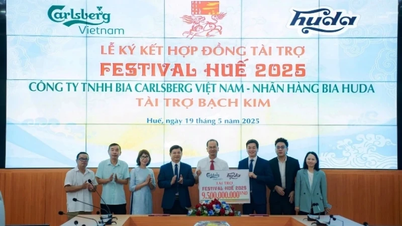
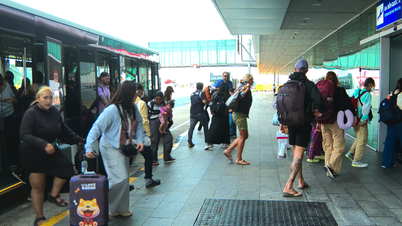



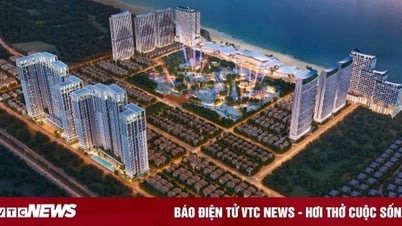





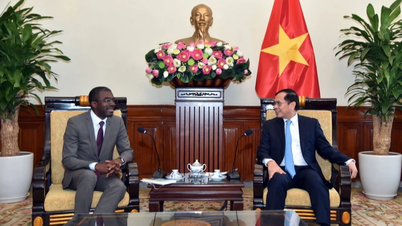
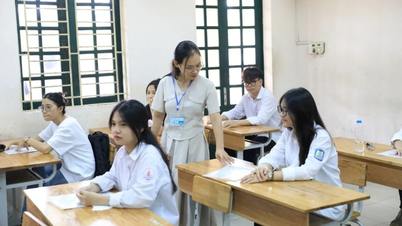
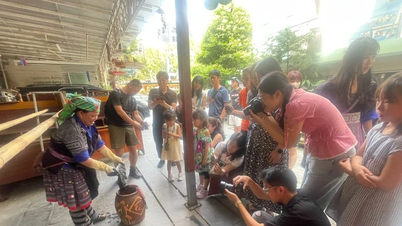
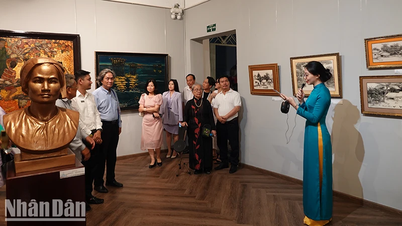

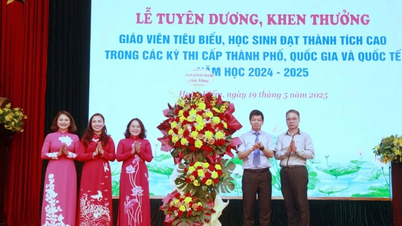
![[Photo] Prime Minister Pham Minh Chinh inspects the progress of the National Exhibition and Fair Center project](https://vphoto.vietnam.vn/thumb/1200x675/vietnam/resource/IMAGE/2025/5/19/35189ac8807140d897ad2b7d2583fbae)














































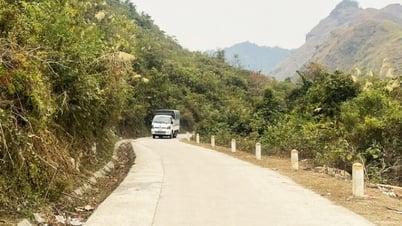

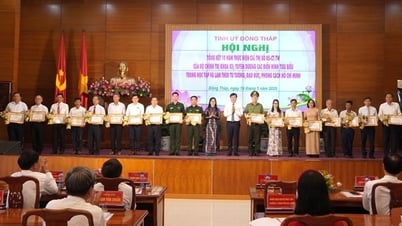
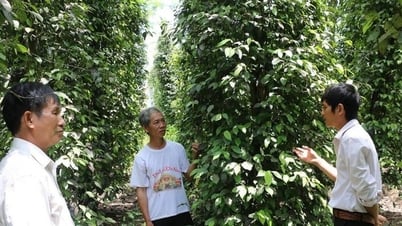








![[VIDEO] - Enhancing the value of Quang Nam OCOP products through trade connections](https://vphoto.vietnam.vn/thumb/402x226/vietnam/resource/IMAGE/2025/5/17/5be5b5fff1f14914986fad159097a677)



Comment (0)